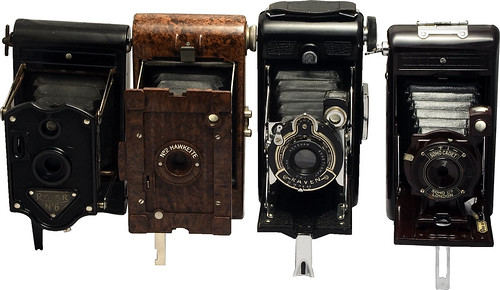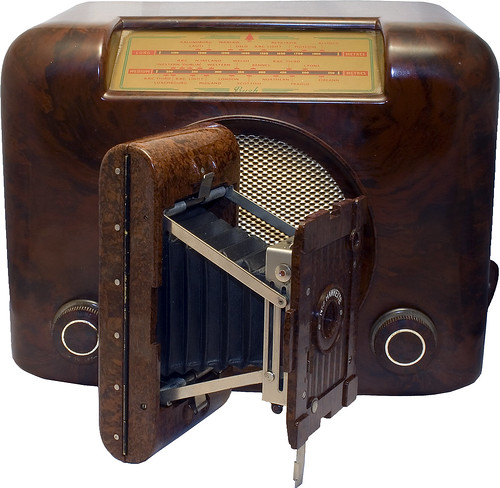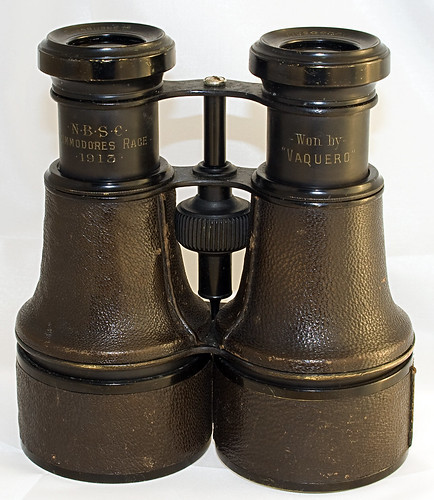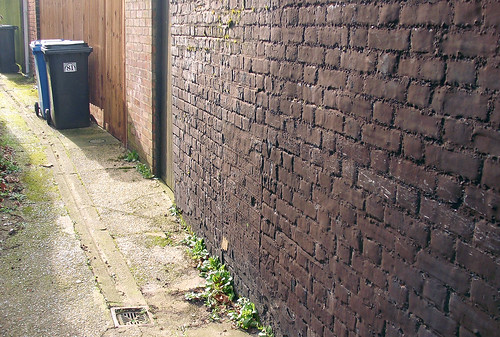Why did the Colonel cross the road? To get run over.
That is unfair as I was not actually run over but instead given a free lift 15 yards up the road. -and lift is the right word because I flew through "the air with the greatest of ease". I am now the proud possessor of divers breaks, cracks, dislocations, cuts, stitches, broken teeth, bruises etc. I am reduced to typing this with one finger. It is now six days after the event and this is the first photograph I have taken (using a tripod). I apologise for it's narcissistic nature.
I must take this opportunity to thank all the NHS workers who have helped to put me back together and laugh at all those yanks who sneer at OUR "socialist healthcare".
Monday, November 21, 2011
you gotta laugh - a self portrait.
Thursday, November 03, 2011
Mad scenes inside the Bakelite
APM - Rajar No 6, Kodak Ltd - No. 2 Hawkette, Kershaw Soho (Sales) Ltd - Kershaw Raven, Soho Ltd - Soho Cadet.
Only one of these cameras is made of Bakelite (the Kodak) as Robert Zimmerman sang in his famous song "Well its a hard, its a hard, its a hard, its a hard plastic gonna fall"
Thursday, October 27, 2011
Thursday, April 21, 2011
A pair of Norfolk Broads Binoculars
Because of the bank holiday I had to do my Friday trawl of Norwich's Junk Shop today. This was my outstanding find of the day. A pair of Binoculars inscribed N.B.S.C. Commodores Race 1913. Won by "Vaquero". This would have been before the Norfolk Broads Sailing Club moved into their present site in the 1930s on Wroxham Broad.
This is a double piece of local history because attached to the case are two tickets for entrance to the West Norfolk Hunt Club Grand Stand and Paddock. One for 1950 and one for 1955. This was presumably Fakenham Races. Interestingly the ticket in 1950 was 30/- (£1.50) - a very high price for the time and in 1955 it was 25/- (£1.25). The only example of deflation I can think of in 1950s Britain.
The only makers name on the binoculars is Chadburns Liverpool. It is unlikely they actualy made them but rather badgemarked them. Chadburns was and is famous as the manufacturers and inventors of ships telegraphs.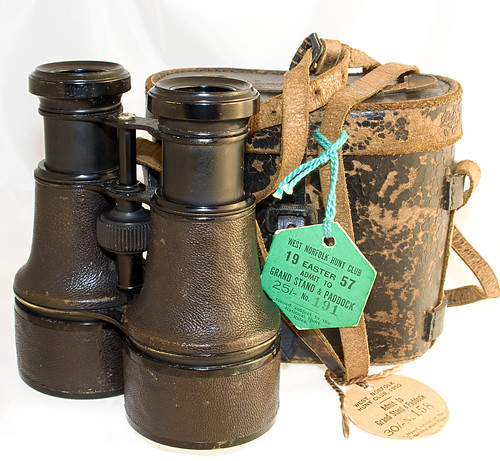
Thursday, February 17, 2011
Deliverance - Thorpe Hamlet Style
"Hey boy, you look just like a hog.... Come on piggy, give me a ride...Looks like we got us a sow here, instead of a boar....I bet you can squeal. I bet you can squeal like a pig."
Seen in a garden, St Leonards Road, Norwich.
Archaeology of domestic plumbing
A change in the pattern in the bricks in the black painted wall reveals the position of the hatch from which "the Lavender Boys" would collect the night soil in the days before mains plumbing. Night soil was still being collected from some Norwich homes up until the 1960s.
The last Norwich Council houses to have outside (plumbed in) toilets were converted or pulled down in the mid 1970s. There are still Norwich City Council homes without baths (but with showers). The most famous recent example of bath-less council homes were the old people's sheltered housing at Greyhound Opening which were knocked down last year. Presumably someone at City Hall decided that Old People ought to be allowed to have baths.
Tuesday, January 18, 2011
The Joy of looking things up

I found this while hunting for stock in Norwich last week. It is a Kuhn Flexameter; which to the uninitiated was a waist level viewfinder designed in the 1930s to be clipped on to a 35mm camera and in particular to Leica cameras.
I was intrigued by the fact that it was made in Wetzlar, Germany which is the same town (city) that Leitz manufactured Leica cameras and decided to do some research.
The first thing I discovered was that it was designed by Frau Doktor Elsie Kuhn-Leitz. She was the daughter of Ernest Leitz II, President of Leitz and co-father of the Leica with Oskar Barnack who actually designed the camera. Kuhn was her married name.
I dug a little deeper and found out that Elsie Kuhn-Leitz should be better known as a courageous campaigner against the Nazis' treatment of Jewish and other forced labourers; she was imprisoned and tortured in 1943 by the Gestapo for helping two Jewish women in their attempt to escape to Switzerland. Her war time activities have been recorded in the book "Elsie's War, A Story of Courage in Nazi Germany" by Rabbi Frank Dabba Smith, Introduction by Henri Cartier-Bresson (Frances Lincoln Ltd,) 2003, ISBN 0-7112-1861-7. Her story is also touched upon in another book by the same author entitled "The Greatest Invention Of The Leitz Family: The Leica Freedom Train".
All of which knowledge, adds not a penny of monetary value to the Flexameter which if I am honest is clumsy to use and rather redundant and only of interest to Leica completists. Neither is it worth a lot of money in the first place. (I have to put that in to appease all the people who will find this posting after googling Kuhn Flexameter in an attempt to discover out what the one they found in Uncle Ernie's bottom draw is worth)
There is a sub-group of Leica camera collectors who specialise in collecting the so called blood Leicas; the ones built with the help of (mainly Ukrainian I think) slave labour. They drool over cameras engraved with Swastikas or bear the markings of the German Army, Air Force, SS etc. It is more than nice to find a Leica antidote to that kind of poison.
Oh and I have sold it anyway but the very few quid (really) I got for it is as nothing compared to the fun I had researching it or the sense of awe at the bravery of people like Elsie Kuhn-Leitz.

